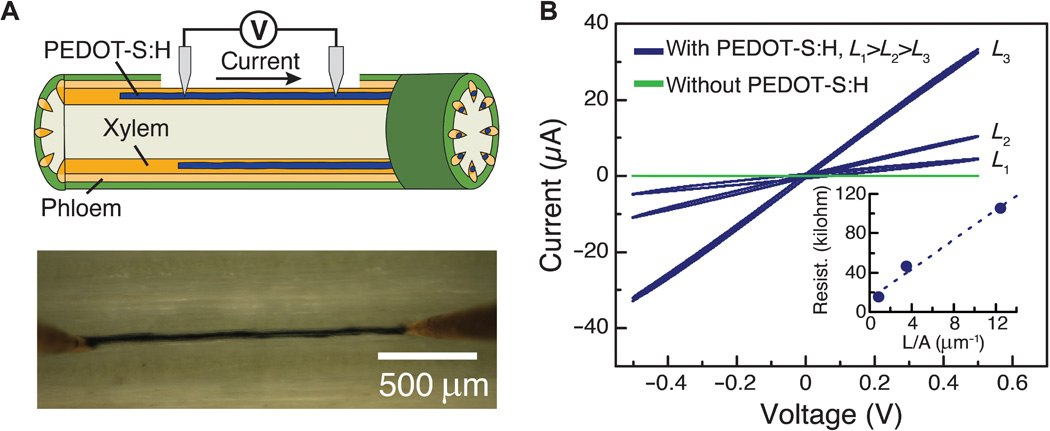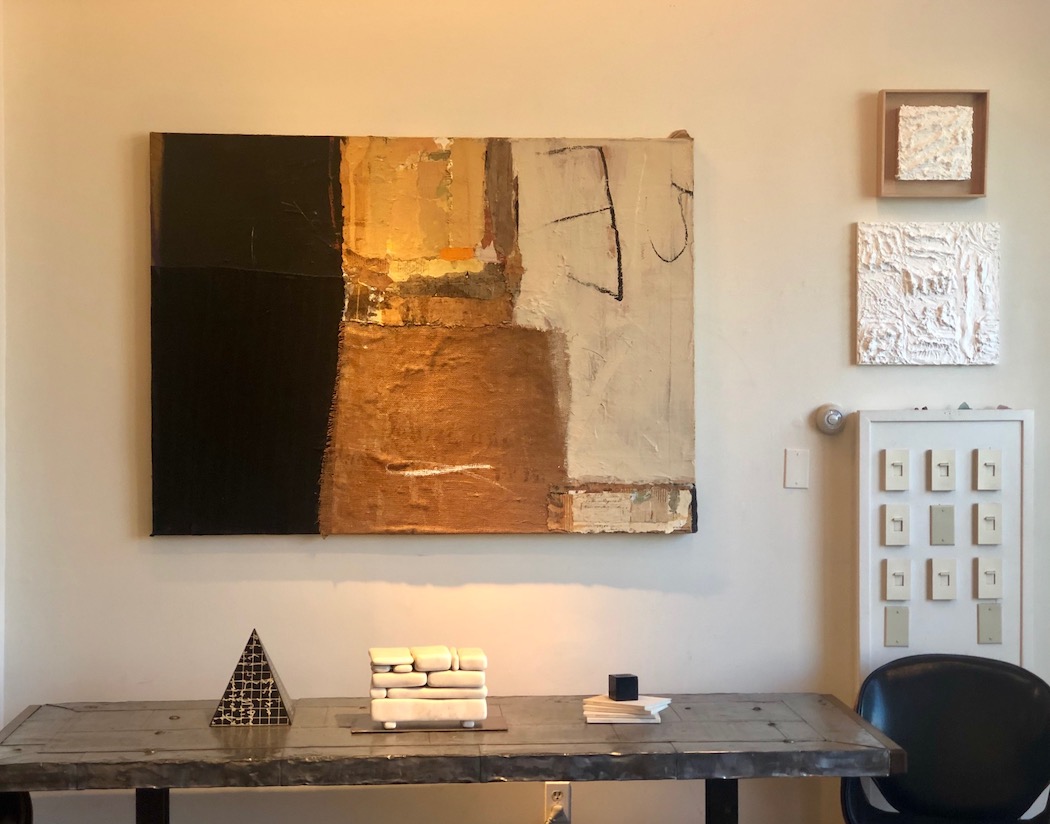
PEDOT "wires" inside plant xylem. | Eleni Stavrinidou, Roger Gabrielsson, Eliot Gomez, Xavier Crispin, Ove Nilsson, Daniel T. Simon and Magnus Berggren
A paper published this month in Science Advances, engineers in Sweden have detailed a process to introduce waterborne PEDOT polymer into plants. The conductive polymer hardens inside the xylem, or vascular system, producing "wires" that can transport the small amounts of voltage naturally found in plants. The treated plants become analogous to electric circuits.
The engineers imagine powering small electronics from such "wired" plants. There is also speculation about using the resulting living circuit to interact with the biological functions of the plant, say to control the timing and duration of flowering.
Source ( New York Times )
